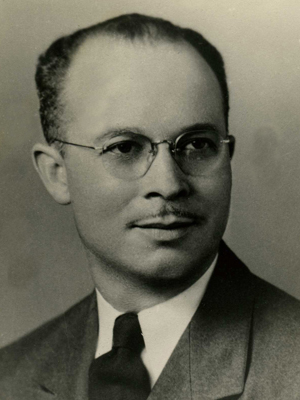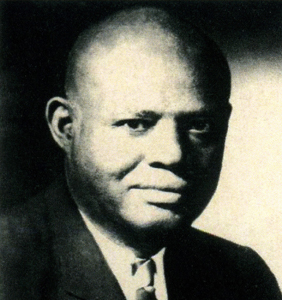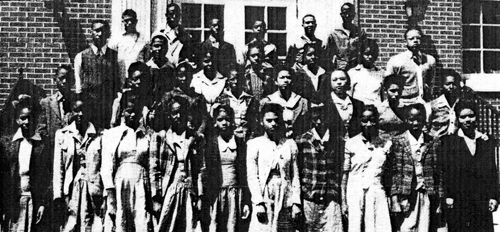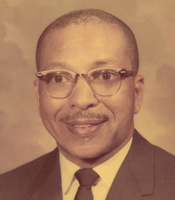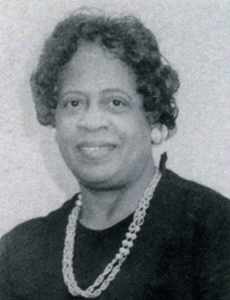School Leadership and |
|||||||||
Laboratory High School was an original institutional member of the Association of Colleges and Secondary Schools for Negroes, entering the organization as an accredited high school in 1934. While faculty were seeking to further their core program during the Study, in accord with the Alabama State Department of Education’s 1939 Planning the Core Curriculum in the Secondary School, the school also maintained a strong traditional college-preparatory orientation (Alabama Curriculum Development Program, 1939). |
|||||||||
Leadership during the Secondary School Study: T. A. Love, Principal to 1942 |
Theodore A. Love, who worked during the formative stages of the Study, would participate in the 1941 Mathematics Workshop in General Education at the University of Chicago. Love continued at Alabama State College and completed a dissertation, “The Relation of Achievement in Mathematics to Certain Abilities in Problem-Solving,” at New York University in 1951 with student data from Alabama State. He would move on to Tennessee State University as a professor of mathematics. |
||||||||
J. Garrick Hardy, who completed a doctorate at the University of Wisconsin in 1946, would leave the principalship of Lab High to serve as dean of the junior college at Alabama State. |
|||||||||
While the Alabama Core Curriculum focused on interests, problems, and needs of students in relation to home, school, and the community, the core offered great flexibility and did not require the labeling of activities unlike other state department core programs of this era. This permitted the Lab High faculty to determine goals in a broader context.
State Teachers College Laboratory High School Goals for 1941–1942: “More emphasis upon democratic thinking and democratic training. Greater emphasis upon student planning in course offerings. More comprehensive development of student talent and cultivation of a deeper sense of responsibility. Some training in student government. More intelligent cooperation between instructors, pupils and library services. More opportunity for the use of specialists in core courses. The continued development within the pupil of traits of honesty, critical-mindedness, self-control, social sensitivity, and freedom from prejudices. Increased desire and more practice in the techniques of attacking life problems. . . . The development of respect for individual opinions and differences. The scientific evaluation of opinions and materials before the formulation of a conclusion” (Love, 1942, p. 7).
“If I am to teach a child—not teach book information, I make the following assumptions: I should attempt to find out as much as I possibly can about each child, his home, his parents, his friends, his behavior in other activities as well as in my class, and in his community. . . . I should allow for maximum freedom in thought and expression so long as these do not interfere with the best interests of the group. I should be unprejudiced, unbiased, and willing to see all sides of my question and be able to present them” (Hardy, 1943). |
|||||||||
“Faustine Dunn used a free reading format. Material was not assigned; students chose what they wished to read and were truly engaged. We also did not stress memorizing rules. We learned how to use the ideas and acted them out. There were many oral presentations as students learned to share what they knew and learned how to communicate.” |
|||||||||



